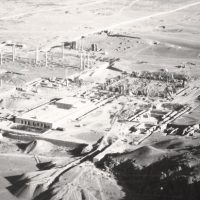-
Supreme Court Agrees To Hear Case Involving Seizure of Iranian Artifacts on Loan to U.S. Museums
07/07/2017
 The U.S. Supreme Court has granted certiorari in Rubin v. Islamic Republic of Iran, a case out of the Seventh Circuit regarding the ability to execute on a judgment by seizing Iranian artifacts held in American museums. The case will likely resolve a circuit split over whether victims of state-sponsored terrorism can collect on judgments by targeting assets of the foreign state held in the United States, even if those assets are otherwise protected by the Foreign Sovereign Immunities Act (FSIA).
The U.S. Supreme Court has granted certiorari in Rubin v. Islamic Republic of Iran, a case out of the Seventh Circuit regarding the ability to execute on a judgment by seizing Iranian artifacts held in American museums. The case will likely resolve a circuit split over whether victims of state-sponsored terrorism can collect on judgments by targeting assets of the foreign state held in the United States, even if those assets are otherwise protected by the Foreign Sovereign Immunities Act (FSIA).
In 2003, American victims of a 1997 terrorist attack in Israel were awarded a $71.5 million judgment against Iran. Eight U.S. citizens had been injured in the attack, carried out by three suicide bombers affiliated with Hamas. Together with their families, the American victims sued Iran for sponsoring the attack, arguing that the terrorism exception to the FSIA opened Iran up to liability in U.S. Courts. Iran did not appear, and the plaintiffs were awarded a default judgment.
The Rubin plaintiffs registered the default judgment in a Chicago federal court, targeting Iranian artifacts held by Chicago’s Field Museum and the University of Chicago’s Oriental Institute. These artifacts include two collections on long-term academic loan to the University from the National Museum of Iran, and a collection of Persian artifacts purchased by the Museum in 1945 (plaintiffs alleged that the artifacts purchased by the Field museum had been removed from Iran without permission and were therefore still Iranian property, although Iran had not asserted a claim of ownership over the collection). The district court awarded summary judgment to Iran and the museums, finding that the FSIA exception requires that Iran itself use the artifacts for commercial activity, and that the third-party use by the museums did not qualify.
The plaintiffs appealed, arguing that the museums’ use of the Iranian artifacts triggered the commercial-activity exception. But the Seventh Circuit was not swayed, and affirmed the lower-court ruling that the foreign state itself must use the property for commercial activity to forfeit its execution immunity. The Circuit Court reasoned that third-party use—such as the display and study of art and artifacts by U.S. museums—would not establish jurisdiction over the foreign state, and therefore could not be used to abrogate the foreign state’s execution immunity.
This Seventh Circuit ruling set up a circuit split, as it conflicted with the Ninth Circuit’s 2015 decision in Bennett v. Islamic Republic of Iran. There, the court held that Iran’s central bank could not avoid paying the victims of terrorist attacks (assets owed to the bank were held in California due to the Treasury Department’s 2007 restrictions on the transfer of Iranian assets). Under the Bennett ruling, legislative exceptions to attachment or execution immunity apply independently of whether the assets are subject to execution.
The Supreme Court will now decide whether the FSIA’s terrorism exception is a freestanding exception to execution immunity, allowing victim judgment creditors to attach and execute upon assets of foreign states, regardless of whether the assets are separately subject to execution. The ruling may impact the conditions under which the assets of foreign states—including works and artifacts on loan to U.S. institutions—are subject to seizure.
Art Law Blog
